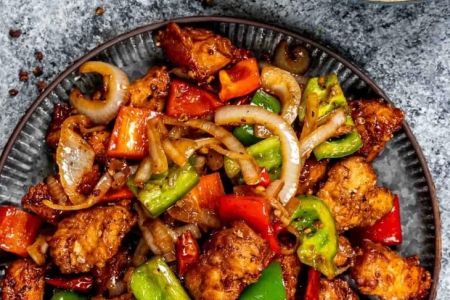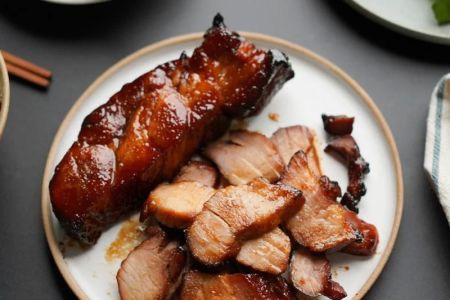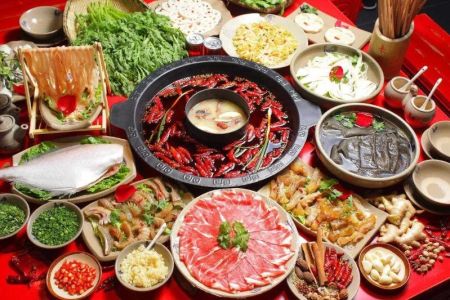The Impact of Coronavirus on Chinese Restaurants in America
When the coronavirus pandemic hit, the food service industry, including Chinese restaurants, faced unprecedented challenges. As a lover of Chinese food and someone who frequently dines at these local eateries, I’ve seen firsthand how much these restaurants have struggled and, in many cases, transformed in response to the pandemic. But just how significant was the impact of COVID-19 on Chinese restaurants? Let’s take a deep dive into this topic.
1. A Sudden Decline in Business
Before the pandemic, Chinese restaurants in America were booming. They were not just a cultural staple for the Chinese-American community, but enjoyed by people of all backgrounds. Popular chains and local family-run restaurants were thriving with dine-in services and takeout orders, contributing significantly to the economy.
However, once COVID-19 struck and restaurants across the country were forced to close their doors for in-person dining to curb the spread of the virus, Chinese restaurants were hit hard. The initial weeks were the most difficult, as many restaurants relied heavily on dine-in customers, and takeout or delivery services weren't a major part of their business models.
2. The Shift to Takeout and Delivery
As the pandemic continued and lockdowns were enforced in cities like New York, San Francisco, and Los Angeles, Chinese restaurants quickly had to adapt. They pivoted to offering takeout and delivery services, even if it wasn’t their usual way of operating. Restaurants had to quickly update their systems, train staff on handling food delivery, and reconfigure their menus to suit this new demand. Some even partnered with third-party delivery services like Grubhub or DoorDash to keep their doors open virtually.
While some of these adaptations were helpful, it wasn’t an easy transition. Chinese restaurants that had once relied on walk-in customers for their income were now forced to deal with a new set of challenges—uncertainty over how long the pandemic would last, the safety of their staff and customers, and how to sustain profitability during a time of greatly reduced foot traffic.
3. The Role of Cultural Stigma
Another challenge that many Chinese restaurants faced during the pandemic was the rise of anti-Asian sentiment. In the early days of COVID-19, misinformation about the virus led to a surge in racist behavior toward Asian communities. Chinese restaurants were often unfairly stigmatized, with some potential customers avoiding these establishments due to fears of the virus.
It was heartbreaking to see how people in the restaurant industry, who were already struggling with the economic effects of the pandemic, also had to contend with the social effects of these biases. However, many restaurant owners and workers were determined to keep their businesses alive. They reached out to local communities, built online presences, and reminded people that Chinese food was just as safe to consume as any other food.
4. Government Assistance and Financial Struggles
During the early months of the pandemic, many Chinese restaurant owners applied for government assistance programs, including the Paycheck Protection Program (PPP), to help sustain their businesses. While these programs were beneficial, they were not always a lifeline. The approval process was slow, and some restaurant owners reported receiving less financial help than they had hoped for. Many restaurants were still forced to make tough decisions, like laying off staff or reducing operating hours.
Despite these hurdles, the government assistance programs did provide some relief. Small business owners, particularly those who were able to quickly embrace delivery and takeout models, found ways to keep their businesses afloat. Some used the downtime during lockdowns to redesign their menus, offer new services like family meal kits, or improve their online ordering systems.
5. The Road to Recovery: Hope on the Horizon
As the pandemic progressed, there was hope that the situation would eventually improve. Chinese restaurants, like many others, began to adjust to the "new normal." Vaccines were rolled out, and slowly, restrictions were eased, allowing restaurants to reopen for dine-in services, albeit with limited capacity and strict safety measures in place.
Now, as we move into 2024, the Chinese restaurant industry is showing signs of recovery. While some establishments have closed permanently, others have bounced back, thanks to a combination of loyal customers and new business strategies. Takeout and delivery remain popular, and many restaurants continue to offer them alongside their dine-in options. Some are even seeing new customers who had never considered ordering Chinese food before the pandemic. The long-term effects of the pandemic may be felt for years to come, but the resilience of the Chinese restaurant community has been inspiring to watch.
6. Looking to the Future
As the world moves beyond the worst of the pandemic, the future of Chinese restaurants in America looks brighter. Many restaurant owners have taken what they’ve learned during the pandemic and incorporated it into their post-COVID strategies. For example, online ordering and delivery are expected to remain a permanent fixture in the industry. Moreover, community support has been stronger than ever. Chinese restaurants are more than just places to eat—they’re a part of the social fabric in many cities across the U.S. By continuing to build relationships with their communities, these restaurants will ensure their survival and growth for years to come.
In conclusion, the coronavirus pandemic has certainly reshaped the landscape of Chinese restaurants in America. From the initial shock of closures to the creative solutions that followed, these restaurants have proven to be resilient. Their ability to adapt to new circumstances and rebuild from a difficult period is a testament to the strength of the industry and its people.






![Top Chinese Restaurants for Authentic Cantonese Cuisine in [Your City]](https://img.gochinarose.com/d33/2507/4157910400_450x300.webp)
